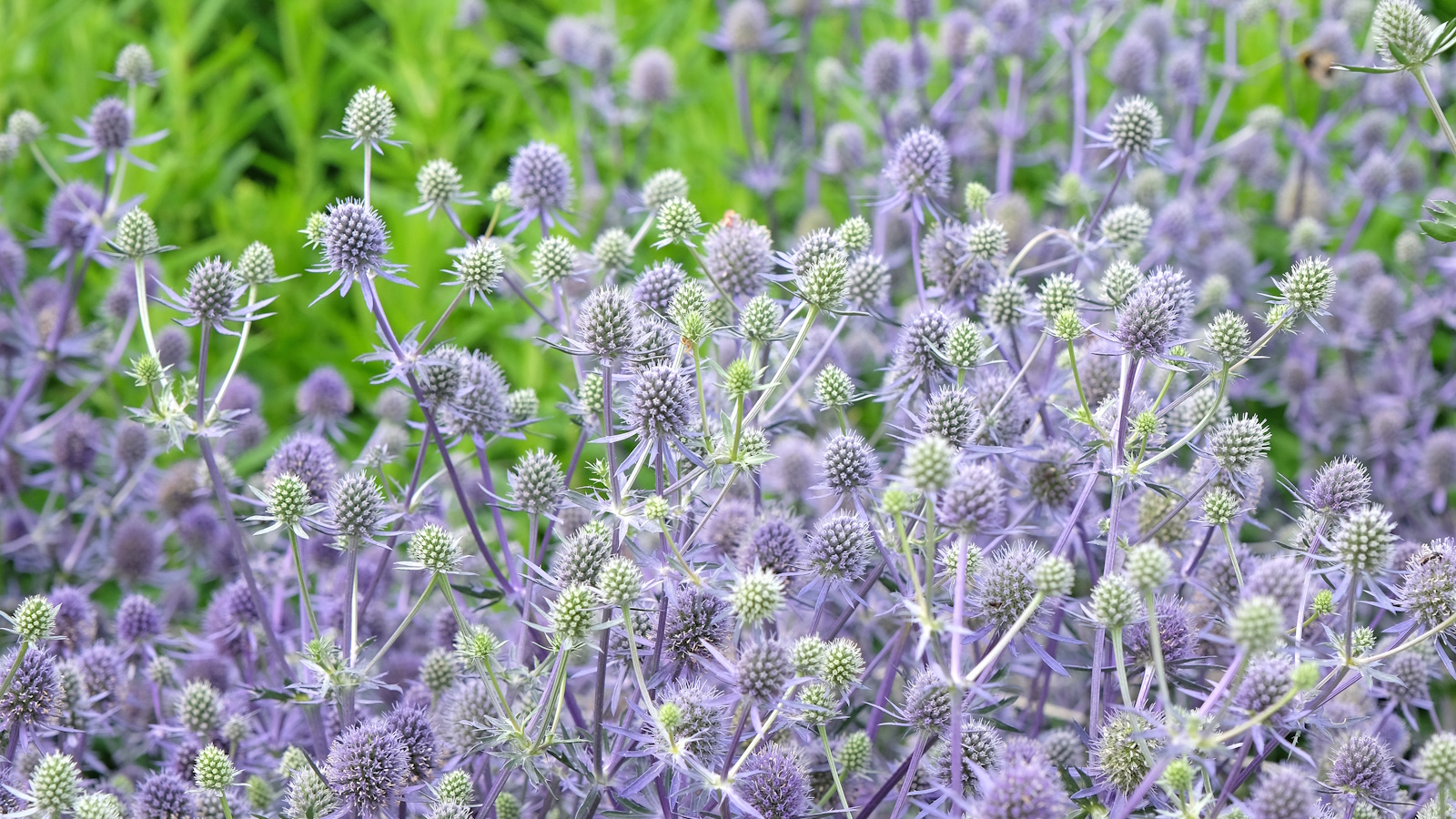
The carrot family contains an unexpectedly wide range of annuals, biennials, perennials and shrubs. Some are native, some are exotic; some are poisonous and some are valuable vegetables; some are very attractive, some attract no one’s attention; some are tight and compact, some will grow taller then you or I; some are easy-to-grow, some are almost impossible. Among the most attractive in the garden are the eryngoes - or Eryngium.
Eryngoes, also called sea hollies, are perennial plants, occasionally annuals, with distinctive, bristly flower heads. They flower heads look more like thistles than carrots and come mainly in blues, silvery green, or white. They often feature a ruff of lacy leaves immediately under the flower heads, making impressive cutting garden flowers that are good for drying.
The mound of leathery leaves can be evergreen or deciduous, depending on the variety and the climate. They tend to be bold in shape, a little spiny, and can be prettily patterned; they’re especially striking gathered into a spring mound through which the upright summer flower stems emerge.
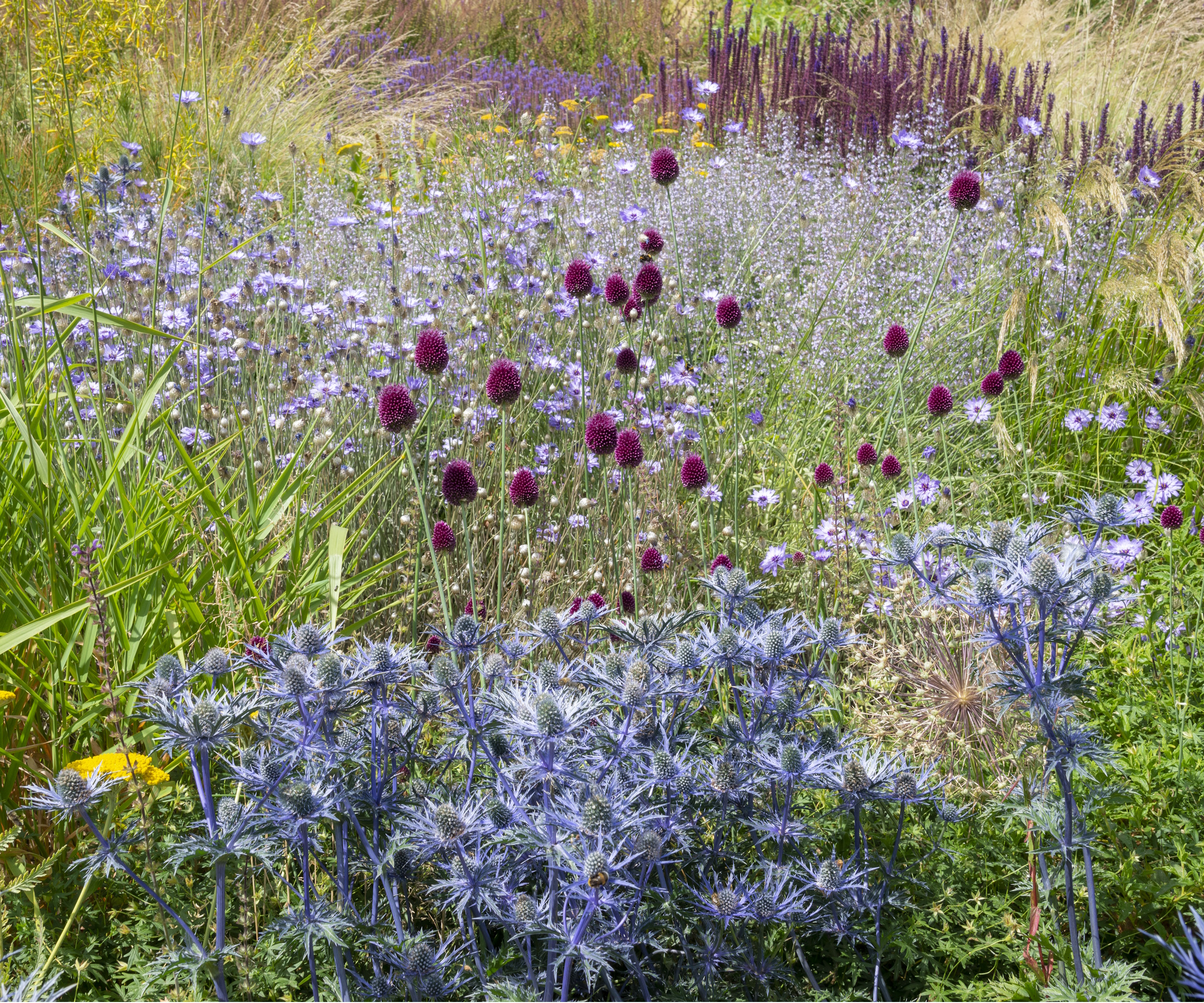
Growing tips for eryngiums
Situation
Most eryngoes thrive in all day sunshine and well-drained soil that is not too rich. Some grow wild in beach sand or shingle – good guidance on drainage – and so will also take sea spray. They are occasionally seen in containers, but usually prefer the open garden.
Care
For best results when growing eryngiums, plant in spring or summer. Regular deadheading removes the brown seedheads that distract from the follow-up flowers at their peak, but beware the spines of many varieties. Wait until most of the flowers on a stem have faded then snip the stem off at the base. Cut off ragged leaves at the same time. At the end of the flowering season some gardeners cut off all the foliage and soak the plant thoroughly to encourage a fresh burst of attractive new leaves.
Plants may need support. The flowering stems of taller varieties can be supported using a bamboo cane for each spike. For shorter varieties a support frame is more practical.
Making more
Perennials can be dug up in spring, the crowns split and the pieces replanted, but in wet seasons they may not grow away well. They may be woody and pruners can be useful but, often, it’s wiser to allow the plants to develop into fat clumps.
Perennial varieties can be grown from root cuttings taken in late winter. Some can also be grown from seeds started in late summer and moved to their flowering sites the following spring.
Seed of the biennial, Miss Willmott’s Ghost, Eryngium giganteum, can be sown in late summer or fall to flower the following year.
Deer resistant?
Generally deer resistant, but may occasionally be plundered if other food is unavailable.
Hardiness
Different species range from unusually frost hardy (USDA zone 3) to tender (USDA zone 9) so it pays to check carefully before buying.
A good range of eryngoes (Eryngium) is available from Walmart,
Eryngium agavifolium (Agave Leaf Sea Holly)
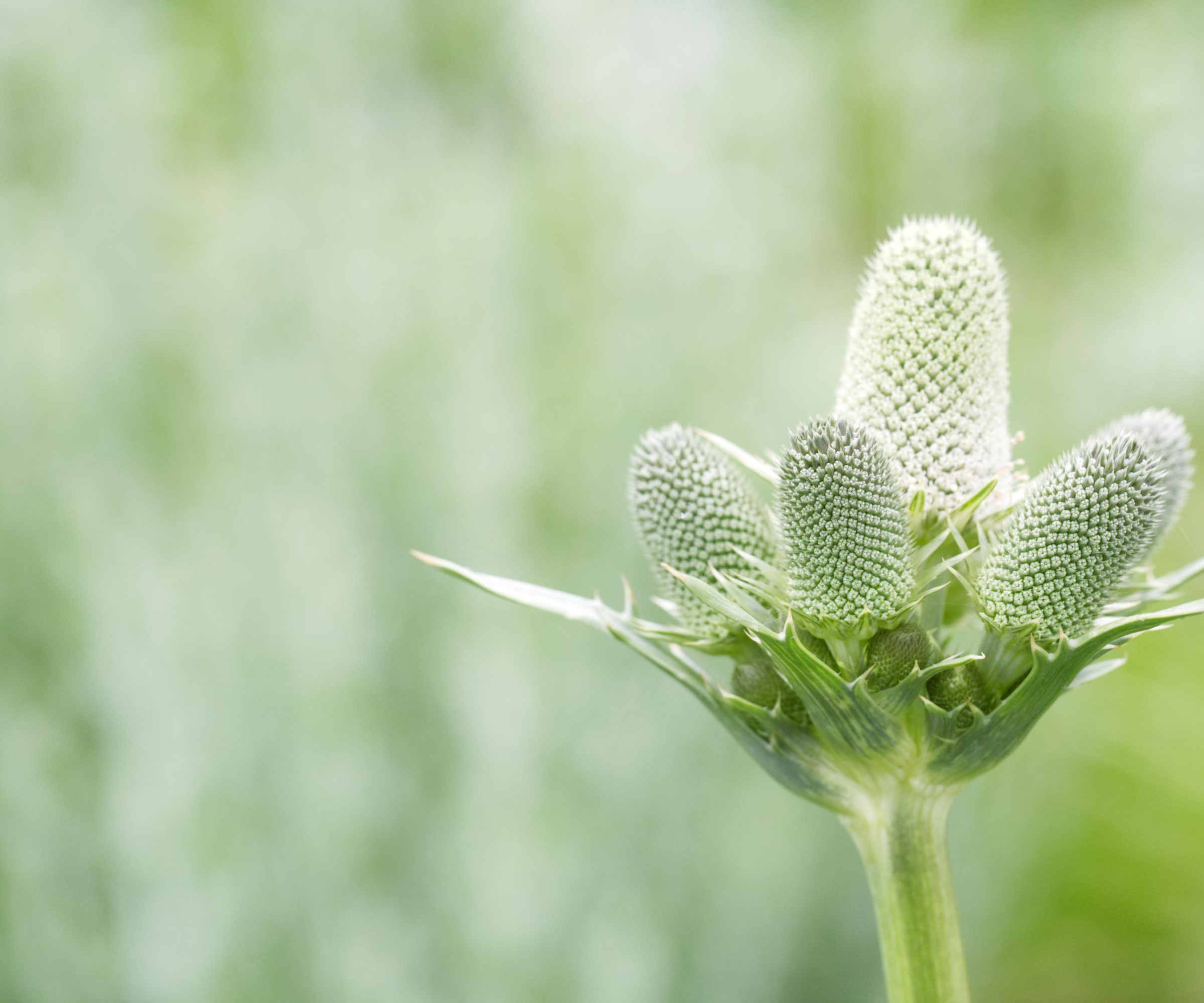
The name of this Argentinian species gives the game away: the evergreen leaves are shaped like those of an Agave. Sometimes growing 18-20in long, and spined at the tip and along the edges of the leaves, the upper foliage clasps the tall flowering stems. Each stem carries up to twenty 2in greenish-gray flowers, but the Agave Leaf Sea Holly is grown more for its impact than its color.
Type: Hardy perennial
Hardiness: USDA zone 6
Good for: Impact as a specimen in large drought gardens and gravel gardens. The hardiest of the varieties in this style.
Height: 4-5ft
Care: Stems will probably need support, cut the stems back hard in fall, tidy the basal foliage as necessary.
Making more: Can be divided, but best grown from seed.
Eryngium alpinum (alpine eryngo)
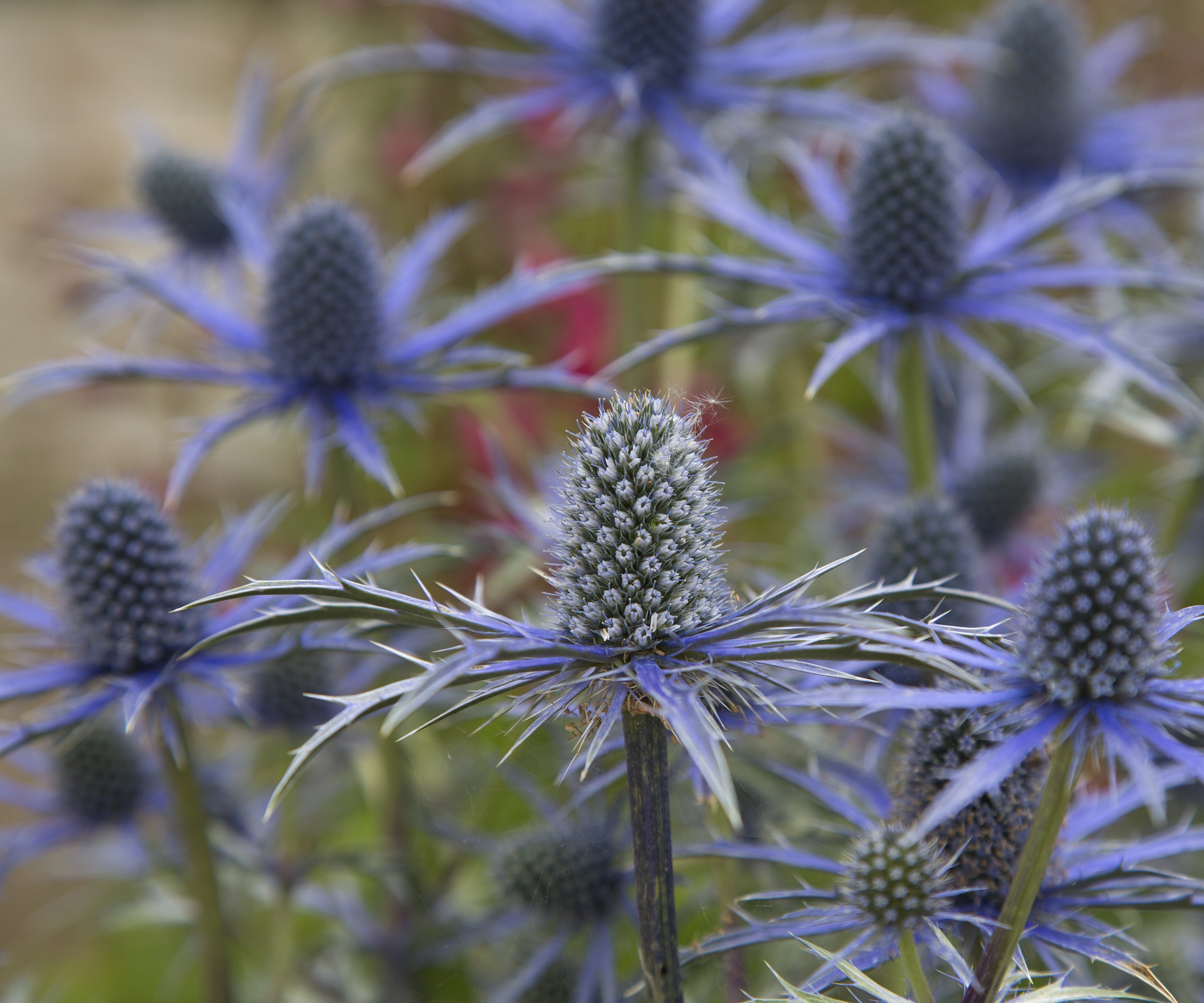
Heart-shaped, deciduous, toothed basal leaves support stout, upright stems that carry 2in blue flower heads in mid and late summer. The flowers sit on a broad and unexpectedly soft, lacily divided ruff.
In ‘Blue Star’ (24-28in) the blue coloring of the flowerheads and ruffs is especially rich and extends down the stems greatly enhancing the effect.
Type: Hardy perennial
Hardiness: USDA zone 6
Good for: Flower gardens and sunny borders that are sunny and not wet.
Height: 24-30in
Care: Stems may need support, cut the stems back hard in fall and tidy away the basal foliage.
Making more: Can be divided, or grown from root cuttings or from seed.
Eryngium amethystinum (Italian eryngo)
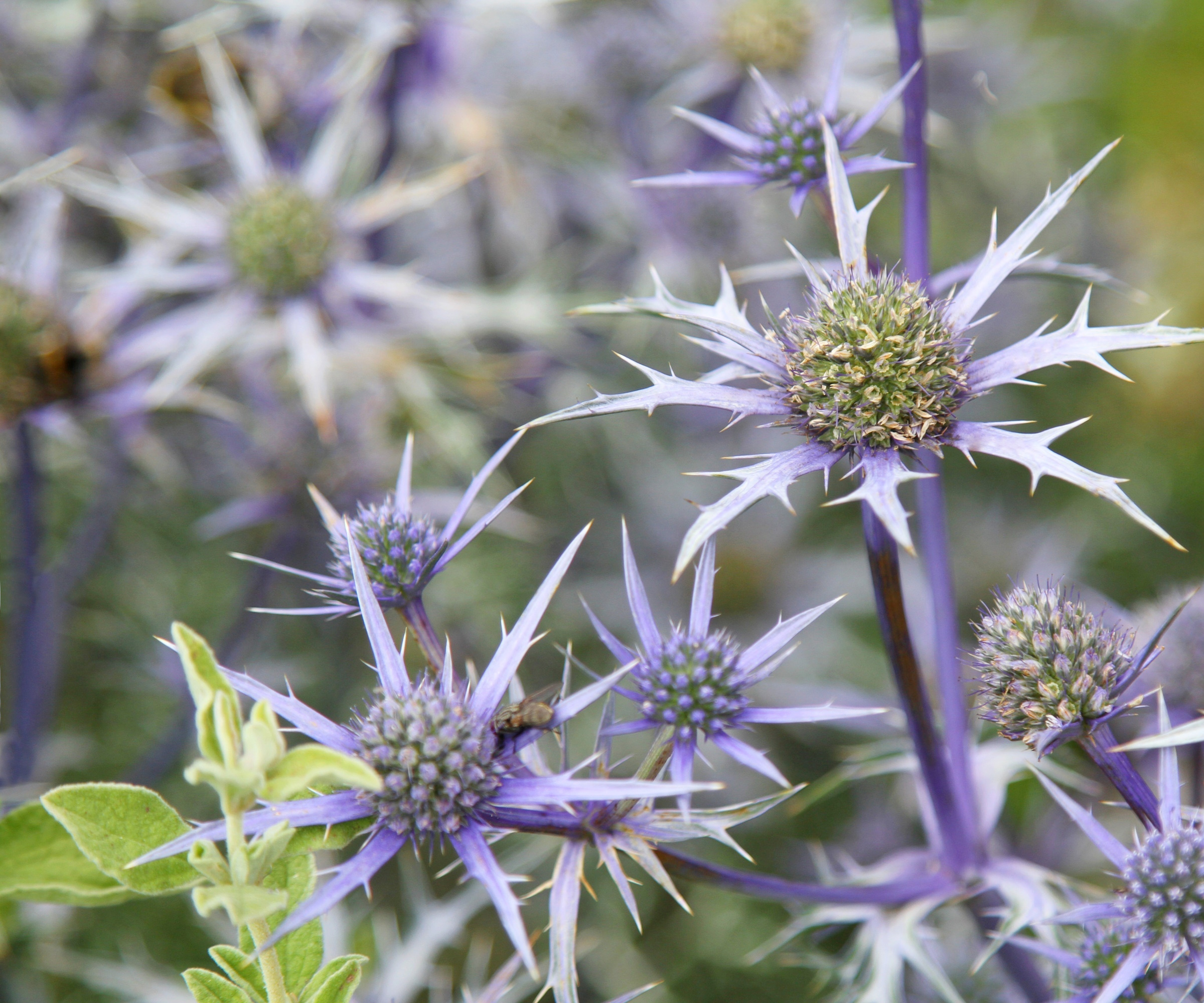
One of a number of similar species whose names have sometimes become muddled, this species stands out as the most tolerant of low winter temperatures. The basal foliage of the Italian eryngo is evergreen in milder climates and looks rather like leathery thistle leaves. In summer, the well branched stems carry small egg-shaped flower heads, each sitting on long blue bracts up to 4in across.
Type: Hardy perennial
Hardiness: USDA zone 3
Good for: Drought gardens, mixed borders, cut flowers.
Height: 20-30in
Care: Stems may need support, cut the stems back hard in fall and tidy the basal foliage.
Making more: Taking root cuttings is a reliable approach, or allow the seed heads to drop their seeds which will often sprout.
Eryngium bourgatii (Mediterranean sea holly)
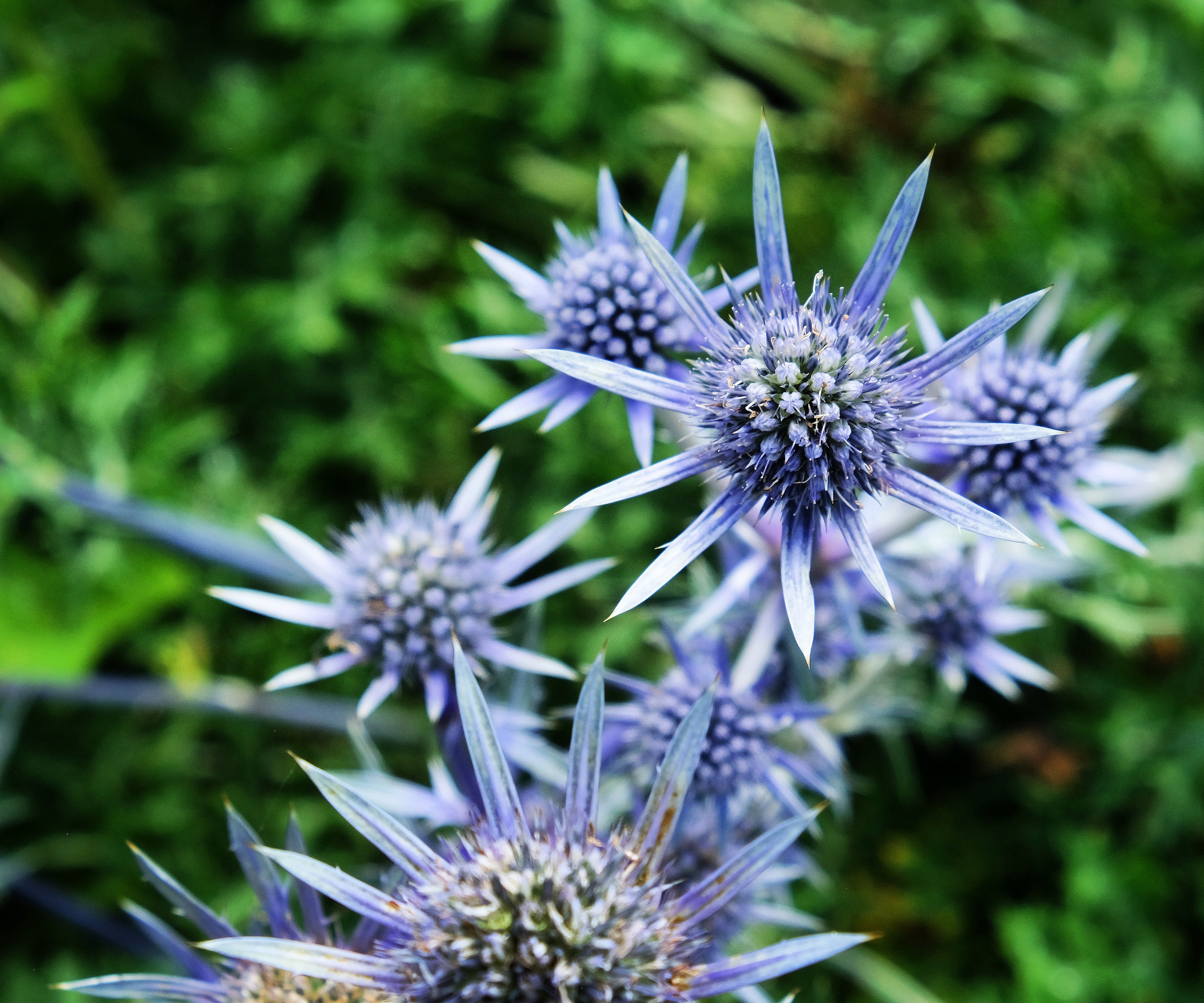
One of the more widely grown species, with glossy, repeatedly divided spiny basal foliage, prettily veined in white.
Upright stems carry small, grey-blue, thistle-like flowers that sit on a broad, spiny ruff that adds enormously to their impact. ‘Picos Amethyst’ (15-18in) has dark amethyst blue flowers that deepen in color as they mature, ‘Picos Blue’ (18-24in) has larger, rich blue flowers on very sturdy stems.
Type: Hardy perennial
Hardiness: USDA zone 5
Good for: Perennial and mixed borders, gravel gardens, drought gardens, coastal areas and for cutting.
Height: 15-24in
Care: Stems may need support, cut the flowering growth back hard in fall and tidy away the basal foliage.
Making more: Easy from root cuttings taken in late winter.
Eryngium giganteum (Miss Willmott’s Ghost)
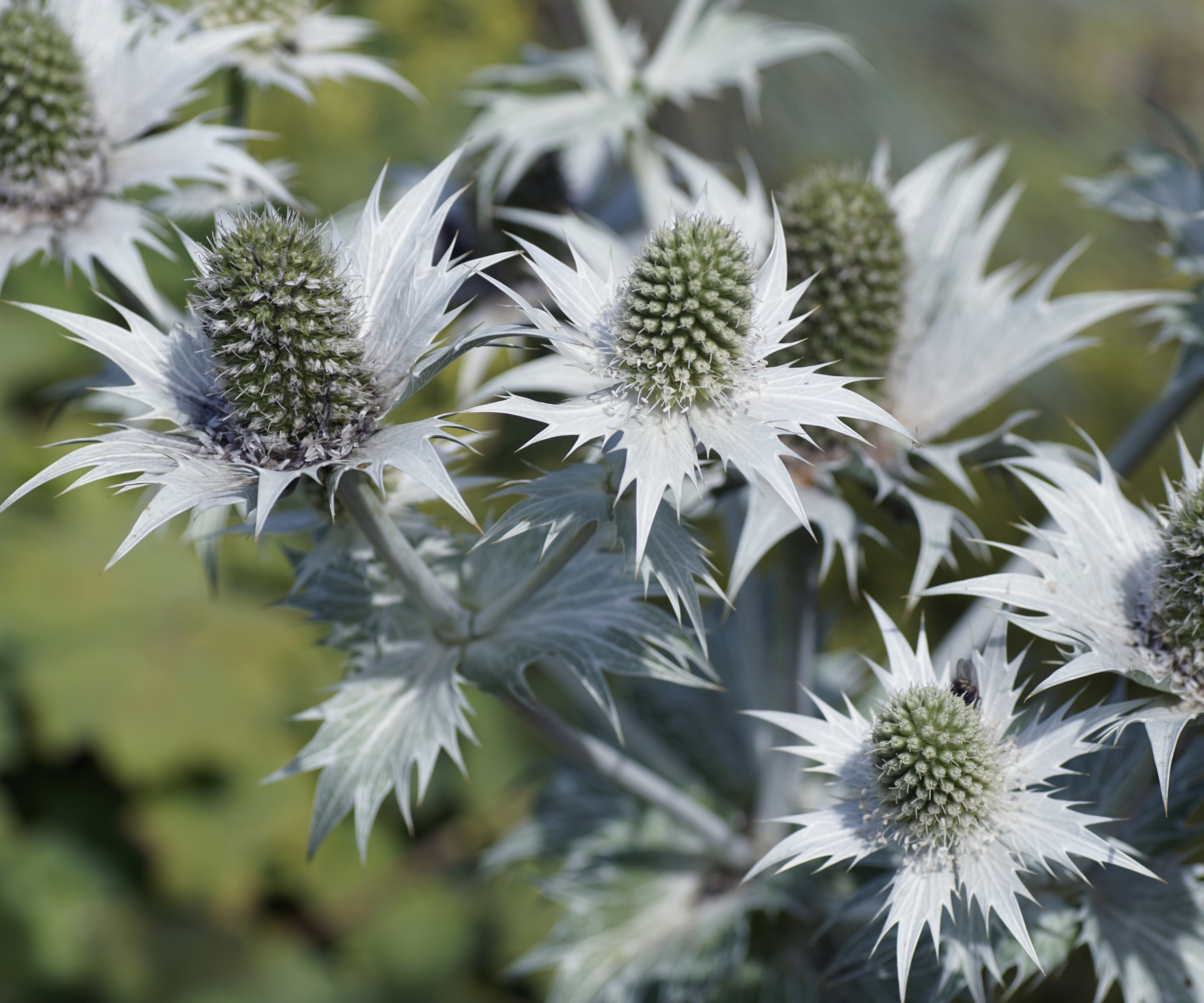
This biennial or short-lived perennial first develops a bold rosette of leathery green, heart shaped leaves then the following year the big and bold ivory silver flowerheads open creating an unforgettable ghostly presence in the border.
Self sows reliably, so seedlings may pop up all over the garden. Does well in shadier situations that most eryngiums. ‘Silver Ghost’ (14-24in) is more silvery, and a little shorter.
Type: Hardy biennial or short-lived perennial.
Hardiness: USDA zone 4
Good for: Sunny borders, as features amongst ground cover.
Height: 18-30in
Care: Deadhead regularly, and then remove the fading plants, to prevent the appearance of too many self-sown seedlings – a few is usually enough. Retain a few self sown plants.
Making more: Transplant self-sown seedlings when small.
Eryngium leavenworthii (Leavenworth's eryngo)
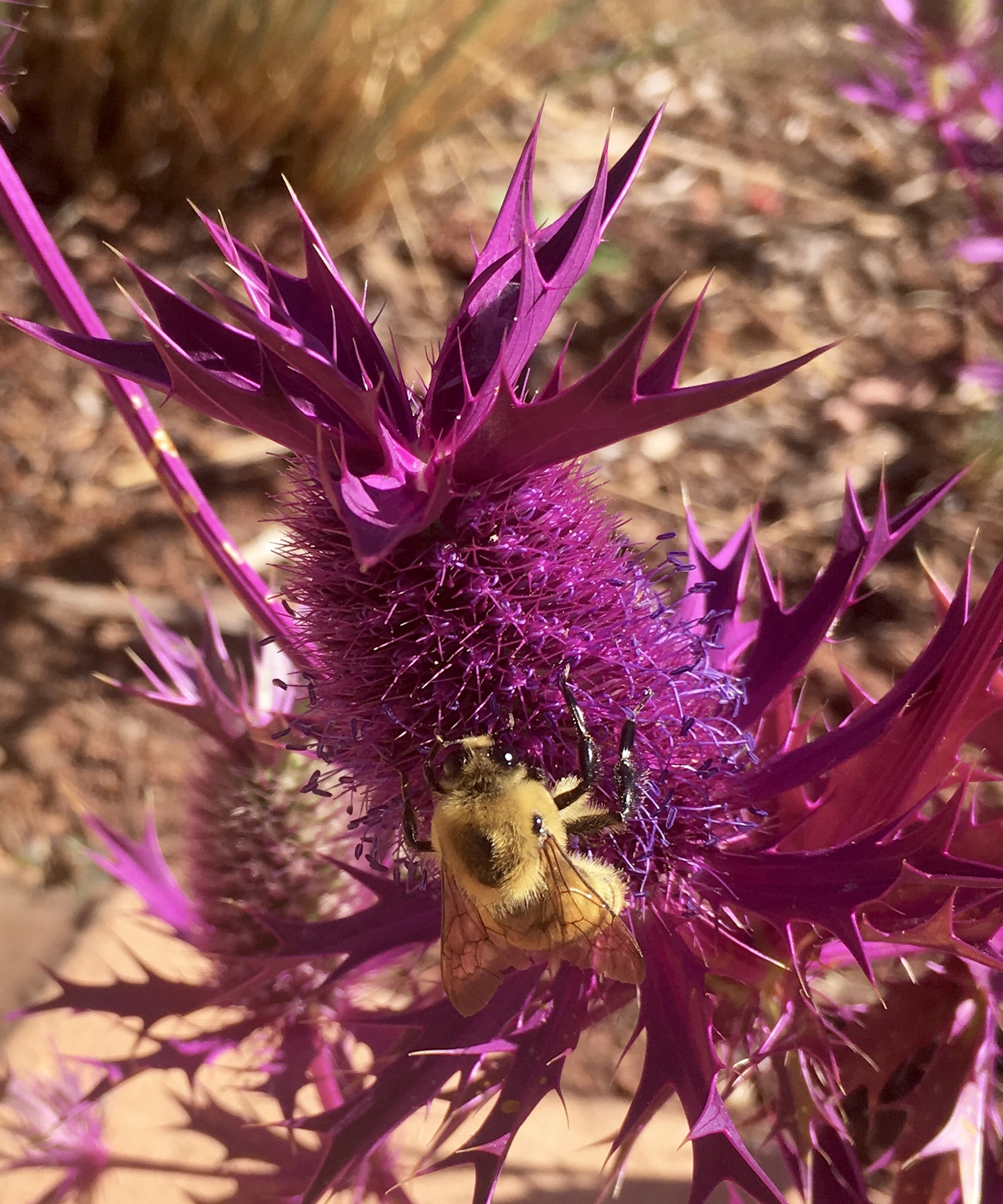
This attractive North American native annual grows wild from Wisconsin south west into Texas. Its vivid, summer and fall purple flowerheads sit on reddish ruffs and feature a starry explosion from the top of each flower head.
Looks good in the garden and makes an eye-catching cut flower. The flowers are also big favorites with an unusually wide range of pollinators.
Type: Hardy annual
Hardiness: USDA zone 4
Good for: Drought gardens, mixed borders, cut flowers.
Height: 2-3ft
Care: May need support, hates wet soil more than most.
Making more: Sow seeds in fall, not the spring as you would with most annuals.
Eryngium planum (Blue eryngo)
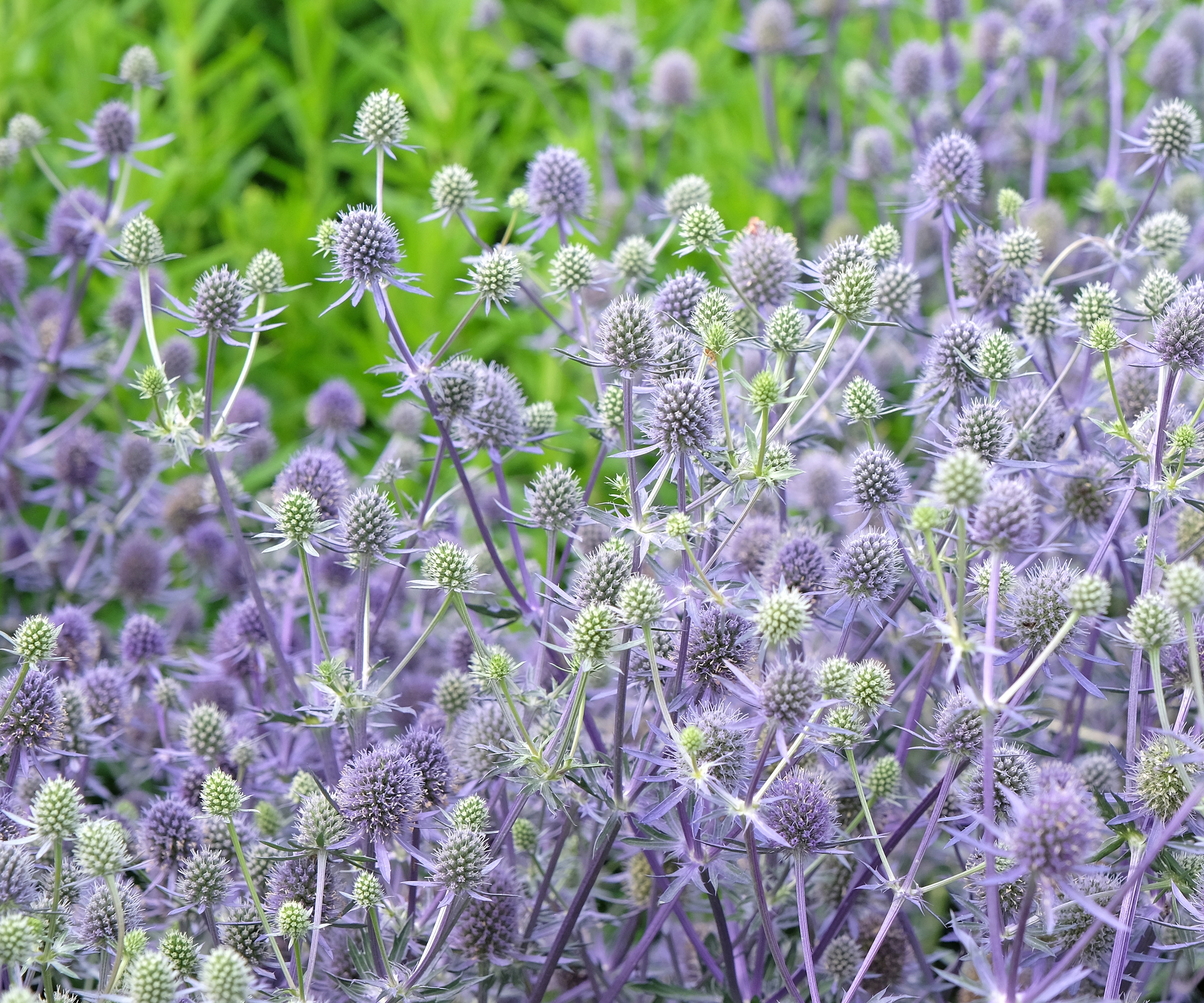
A rather variable deciduous plant with some fine varieties, enthusiasm from cut flower growers has led to many recent introductions. Dark green, more or less egg-shaped leaves make a rich mound, the flowers come in branched heads in a range of colors from deep blue through to silvery shades.
The flowerheads are quite small, but each sits on a lacy ruff and the stems are repeatedly branched to create a long display in summer and fall. ‘Blue Hobbit’ (12in) is exceptionally short, ‘Blue Glitter’ (3ft) is an intense blue and does especially well in the south.
Type: Hardy perennial
Hardiness: USDA zone 5
Good for: Drought gardens, mixed borders, cut flowers.
Height: 1-3ft, depending on variety.
Care: Deadhead regularly, tidy the plants at the end of the season, cut away dead foliage in early winter.
Making more: Seed of some varieties is available, plants raised from seed collected from your own garden may not resemble their parent plant.
Eryngium yuccifolium (rattlesnake master)
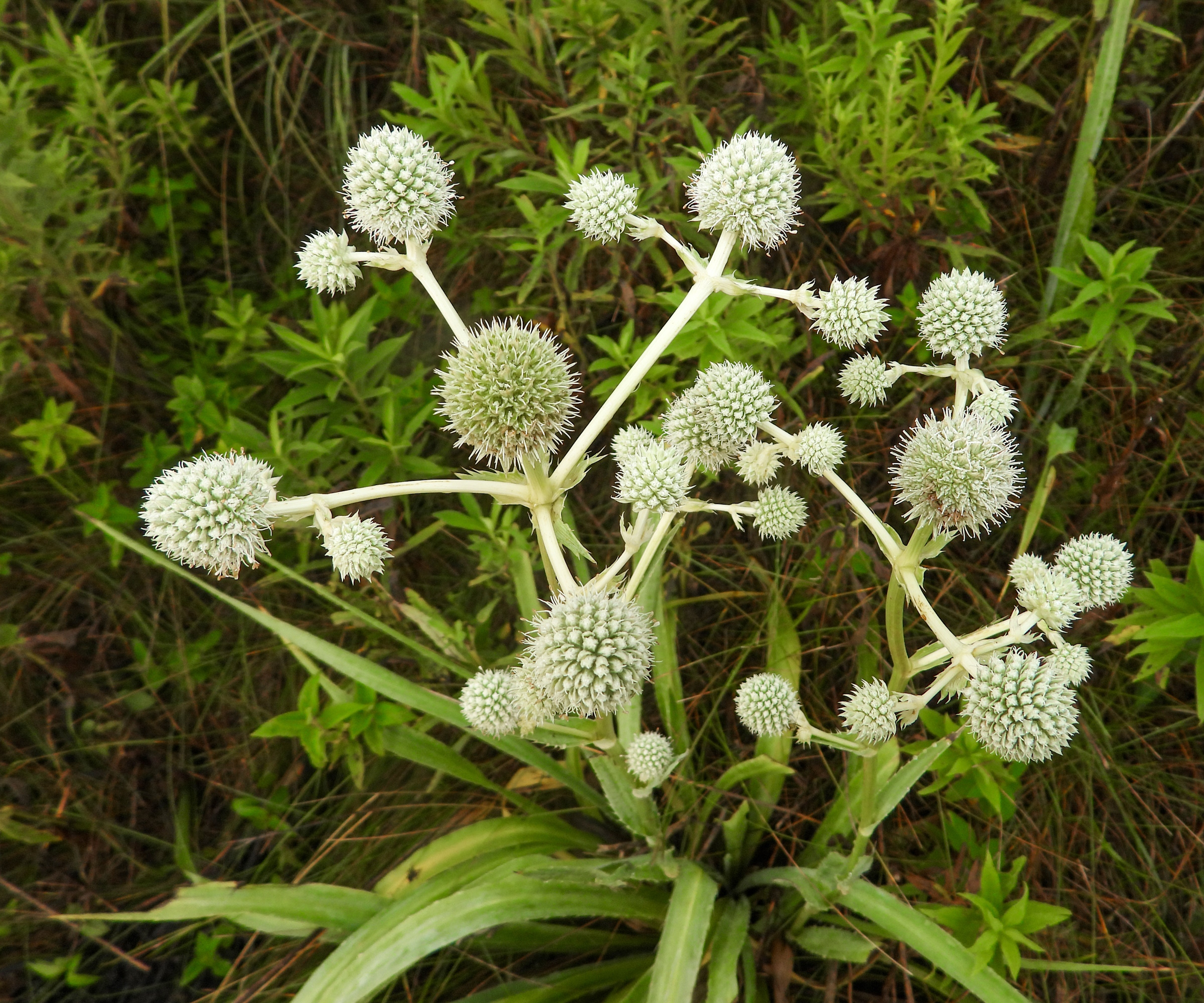
Growing wild over much of the east from Minnesota to Florida, this is a bold and dramatic plant. The long, toothed, bluish green basal leaves make an impressive rosette and extend up the stems, almost clasping it.
In summer and fall the 1in wide flower heads open in grayish blue, white or green above a small ruff. The plant’s common name comes from mistaken belief that its roots cure snake bites.
Type: Hardy perennial
Hardiness: USDA zone 4
Good for: Making an impression in mixed borders, in restoration plantings.
Height: 4-6ft
Care: Often needs discreet support from bamboo canes and twine. Deadhead as the flowers deteriorate, tidy up the plant in late fall.
Making more: Raise from seed, or root cuttings. Separate the offsets that develop at the base and plant them individually.
Eryngium x zabelii
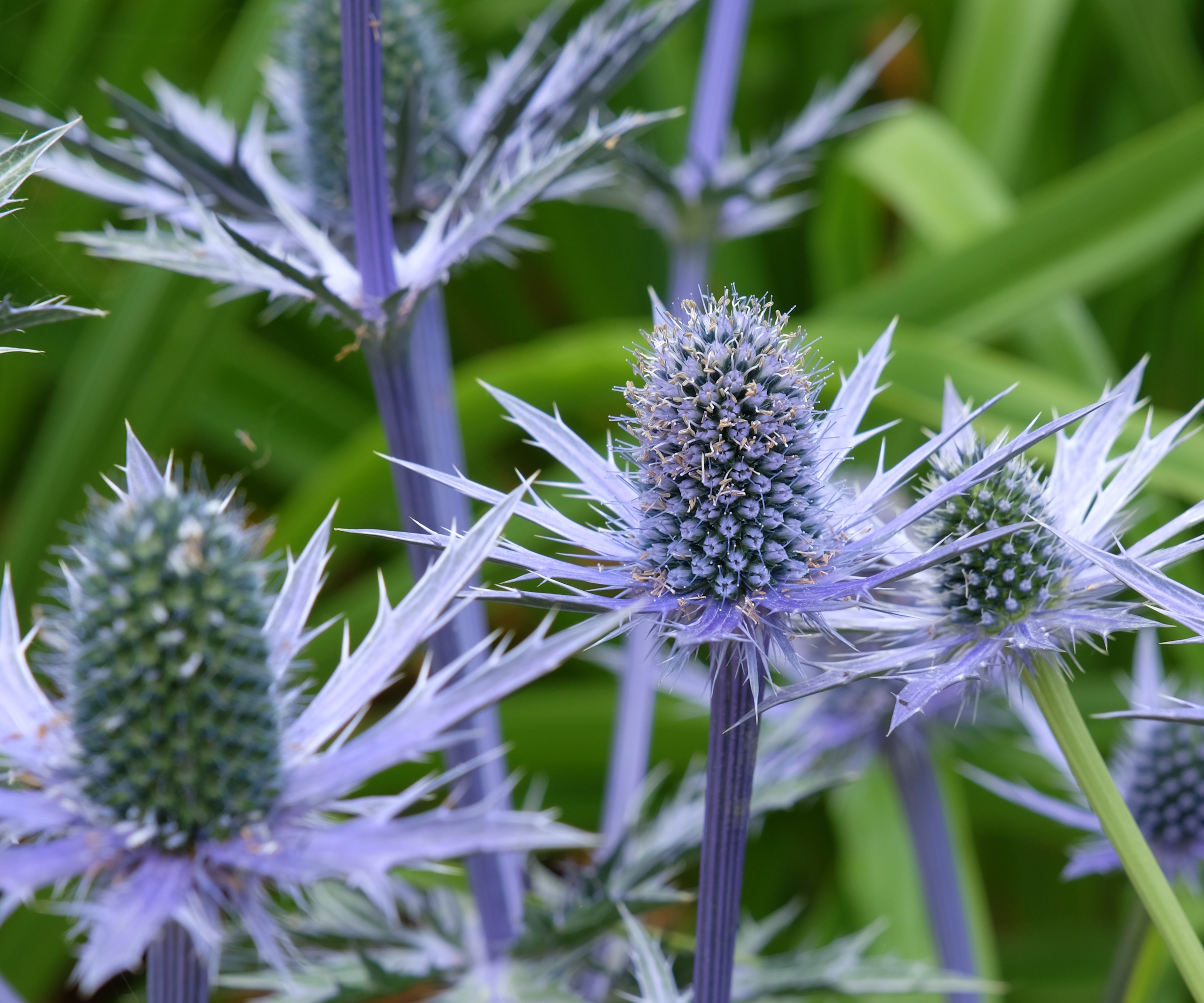
One of the most dramatic of the smaller types, the leathery and rather spiny basal leaves are divided into lobes and deteriorate in the fall, although they may not die back completely. Through summer, the stems carry large more-or-less cylindrical flowerheads in deep blue or violet with small ruffs.
The coloring from the flowers often continues down the stem. The dramatic ‘Big Blue’ (2-3ft) has large ruffs and intensely colored flowers, with the stem coloring extending low on the plant. Strong growing ‘Jos Eijking’ (24-30in) has larger, starry ruffs while the very colorful ‘Neptune’s Gold’ (24-30in) is like ‘Big Blue’ but with bright golden foliage.
Type: Hardy perennial
Hardiness: USDA zone 5
Good for: Feature plant in mixed or perennial borders.
Height: 2-3ft.
Care: Perennial and mixed borders, gravel gardens, drought gardens, coastal areas and for cutting.
Making more: Root cuttings, careful division of the crown.
Culantro (Eryngium foetidum)
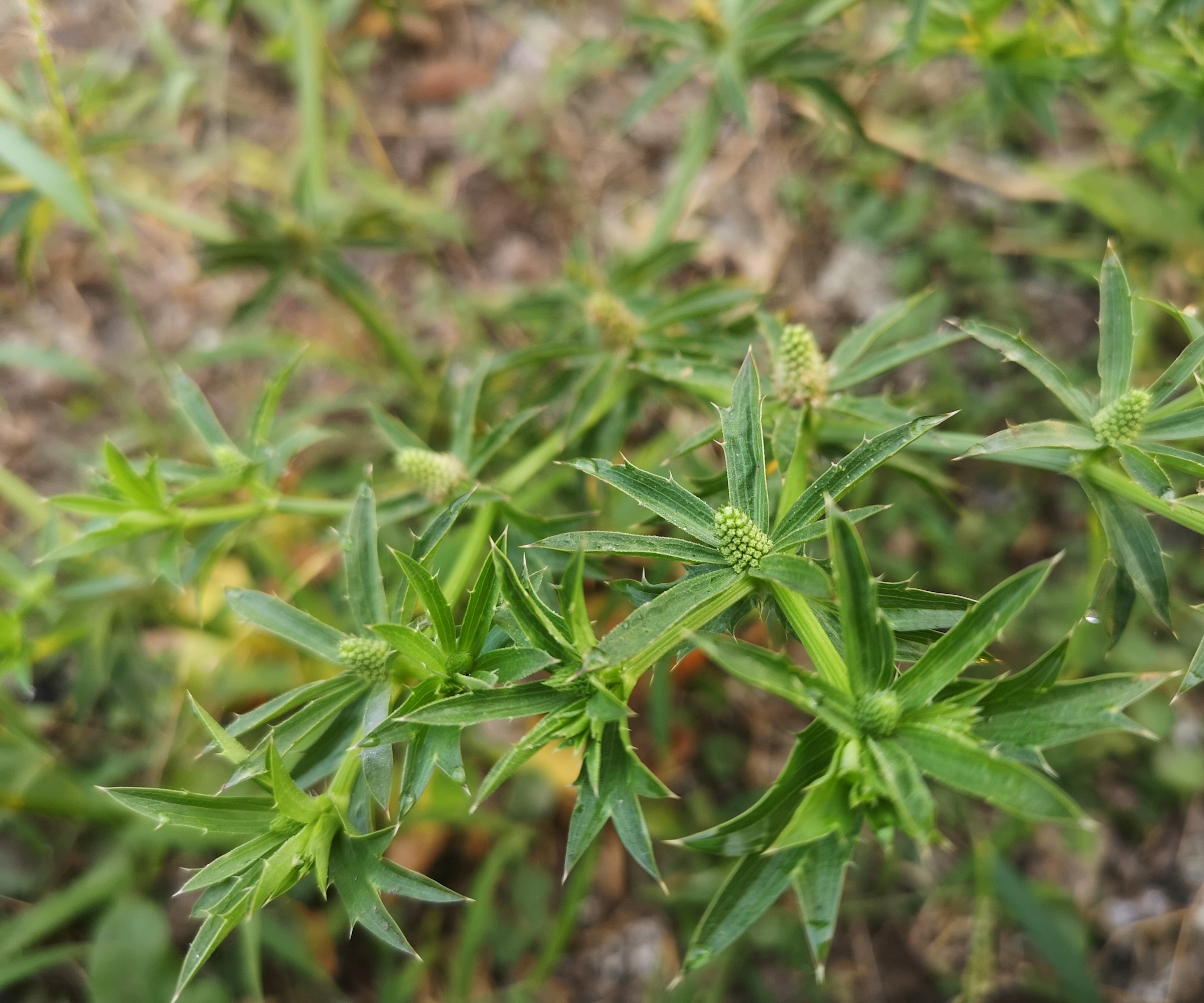
Culantro stands out from other eryngiums in a number of ways. Firstly, this is not a garden flower for beds and borders, this is an edible culinary herb. Its flavor is similar to that of cilantro (aka coriander, Coriandrum sativum), with its confusingly similar common name, but is noticeably stronger. It also has a range of medicinal uses and was once used, in traditional medicine, as a treatment for epilepsy.
Type: Although grown as a perennial in the tropics, in North America culantro is usually grown as an annual or biennial.
Hardiness: USDA zone 8
Good for: Kitchen use
Height: 10-24in, depending on the climate.
Care: Snip off the flower buds to encourage foliage development. Be aware that the flavor is very strong.
Making more: In mild areas, sow seeds in fall for picking the following spring and summer. In colder zones, start seeds in spring. Will often develop its own seedlings in milder zones.
For gardeners, the problem is not whether or not to grow them: these are fine plants. But many are so similar that distinguishing one variety from another can be tricky. So, we fall back on saying that if you like it, grow it – and don’t worry about it having the right name.







